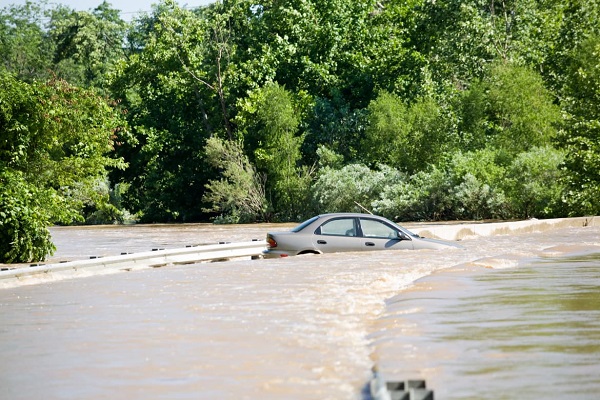
Accra flooding: Disregarded causal factors
The earth has its own natural surface features, including mountains, hills, valleys, flat areas, natural river channels, with accompanying floodplains, depressions and wetlands, lagoons, etc., which effectively control and manage overland water flows following rainfall.
Usually, however, man-made structures and other civil works sited over the land disrupt these natural features in their critical roles in the management of overland flows.
Advertisement
It is worthy to note that any move, whatsoever, to alter the influence of the natural topographic features in the management of overland flows, would require compensating for the absence of that feature’s contribution.
This is usually done by comprehensive spatial planning protocols and also, by incorporating certain features in the engineering structural designs. Largely, this is not the case being experienced in Accra.
However, it appears that all what people understand by the use of land in Ghana is only to build human settlement structures, while disregarding all other considerations.
By so doing, depressions and wetlands, flood plains and, in some instances, the channels themselves have all been indiscriminately invaded by developers.
Activities
All these activities have been done without recourse to the absence of the natural features and their important contribution to the management of overland flows during and after rainfall events.
As a result, what is left is an extensive, contiguous continuum of human settlement structures all over, with these structures occupying large spaces which could otherwise facilitate infiltration of water into the subsurface and also enhance evaporation, thereby reducing the amount of storm water flow over land.
The worsening trend of flooding in Accra, in particular, is partly due to the fact that landowners, who develop these structures have the penchant of occupying the entire space of the parcel of land with the structure, such that, no room is left to accommodate their building materials, such as, sand, gravels, blocks, etc.
These materials are deposited along the side of the access road or in front of properties. After using the materials needed for the construction, developers do not evacuate what is left-over and clean up.
Loose construction materials, get transported downstream and are deposited in drainage channels and other water transport conduits, contributing to the incidence of flooding in the city of Accra.
Yet, that issue is never up for discussions on flooding in the city.
Contribution
The contribution of loose construction materials and their poor management at construction sites to flooding in Accra is enormous.
The traffic light intersection at the National Theatre, the Okponglo intersection leading to the entrance to the University of Ghana, under the railway bridge near the former Shangri La Hotel and sections of the Achimota-Ofankor highway are but a few of the locations in the city, where the effect of channel siltation emanating from poor management of loose construction materials is visible.
These locations have underground drains that were free draining a few years following the completion of the road construction.The drainage channels at the locations mentioned above have been covered.
However, they are now choked with silt, such that these areas readily get flooded during and after a moderate rainfall. The silt choking these drains are transported from the upstream of these locations and deposited there; with construction materials from various sites constituting a significant amount of this.
Other blockages are by the unauthorised, uncoordinated and inappropriate manner of pothole filling with loose materials.
Some remediation measures for the effective management of overland flows to minimise the incidence of flooding is required.
An appropriate spatial planning framework and land use regime is needed. Wetlands located in upstream of flood prone areas should be mapped out and preserved as much as possible.
Topographic benchmarks, to which all construction works must be referenced, should be made available for coordinated development.
Laws/by-laws guiding the control and appropriate management of construction material, that is, sand, gravels, quarry dust, borrow material, etc., must not be allowed to be deposited on the side of streets or roads, indiscriminately.
Potholes filling should be carried out in a timely manner to avert unauthorised and inappropriate filling with just any loose material.
The writer is a Water Resources Management Consultant.
E-mail: [email protected]




